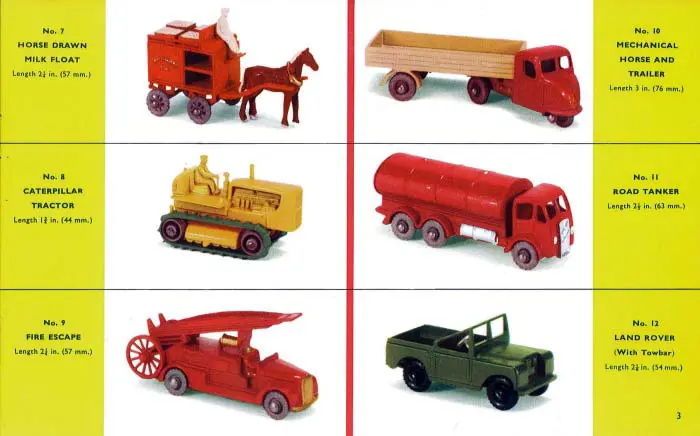MATCHBOX TOYS AT SEVENTY
05 January 2024
This blog is by way of a triple celebration. Lesney issued its first Matchbox die-cast model in 1953, its first buses and lorries in 1954, and for seven decades they have delighted motoring enthusiasts of all ages. In 1966, the Matchbox brochure claimed: "it is a true but amazing fact that if all the models from a year’s work in the Lesney factories were placed nose to tail they would stretch from London to Mexico City – a distance of over six thousand miles".
The story commences in 1947 with a company formed by Leslie Smith, Rodney Smith, and Jack Odell. To quote the great automotive historian Giles Chapman in Classic & Sports Car:
Leslie was a jobbing builder and carpet salesman, Rodney worked in an engineering factory and Odell had most recently been salvaging parts from old army vehicles when, in 1947, they pooled their meagre savings into a business to make small diecast components.

'Lesney Products' operated from a factory converted from the bombed-out Rifleman pub in Tottenham. Its initial output was castings to the electrical and motor industries, with a small number of die-cast toys as a sideline. A notable miniature vehicle was the green and red road roller devised by Odell for his daughter Annie. In 1950, she complained that school regulations meant only toys that could fit into a matchbox were permitted.
As a result, her father made her a miniature road roller, which became the basis of the Matchbox range. Following shortly afterwards was a Muir-Hill site dumper, a cement mixer, and a Massey-Harris tractor. At that time Dinky bestowed its agency on toy shops they believed worthy of their brand while Lesney's commercial travellers would promote Matchbox in a variety of outlets. It is tempting to imagine their sales team a) resembling a young George Cole and b) being accompanied by the Flash Harry theme from The Belles of St. Trinian's.
From the perspective of a young consumer, Matchbox Toys were detailed and their prices commenced at the 1/6d mark - within reach of most pocket monies. By 1959 the 72-model line-up included a Wolseley 1500, a Bedford-Duple "Luxury Coach", an MGA, and an Aston Martin DB2/4. A trolley bus advertising "Drink Peardrax Sweet Sparkling" is a reminder of a form of London Transport soon to vanish while a Daimler ambulance appeared to have strayed from a typical black and white British film
In 1962 Odell informed The New York Times: "We produce more Rolls-Royces in a single day than the Rolls-Royce company has made in its entire history". The film crew of Pathé News visited the factory that year, with a draftsman sporting a late-period Teddy Boy quiff at the drawing board. He discusses the merits of a replica Austin A55 Cambridge Mk. II with another technician. Meanwhile, another Lesney employee, one who resembles Peter Sellers, creates a wooden model as Wendy Richards look-a-like sorts through some double-deckers.
In other words, it is all quite wonderful. Even if the footage will encourage you to invest in a die-cast Austin Cambridge - https://www.youtube.com/watch?v=d_Yjyy_Rp2A
